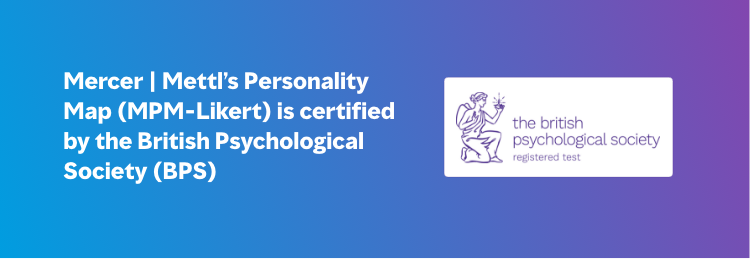Mercer | Mettl, a global leader in online assessments, takes an exhaustive approach to assessment curation. Data is collected from a sample of more than two thousand respondents (representative sample with different ages, genders, job levels, and education) for norming. At the same time, the validity (convergent) is between 0.4-0.67, and the reliability coefficient is between 0.63-0.73.
Furthermore, Mercer | Mettl assessments adhere to the principles for validating and using personnel selection procedures set by the Society for Industrial and Organizational Psychology (SIOP) and uniform guidelines on employee selection procedures by The Equal Employment Opportunity Commission (EEOC). The tests also meet the Association of Test Publishers (ATP) and the American Psychological Association (APA) guidelines.
Here is how a Mercer | Mettl assessment curation process operates:
Competency framework creation:
Organizations share their requirements, and a dedicated team of in-house subject matter experts works intricately to curate the list of competencies and sub-competencies that need to be measured.
Assessment tool mapping:
Once the skill or competency framework is sealed, these competencies are mapped to one or more relevant tools for the assessment. These tests range from psychometric tests to aptitude tests for specific industries or skills. The assessments can be in different formats, such as multiple-choice questions (MCQs), situational judgment tests (SJTs), and simulators.
Question creation and curation:
Once the relevant tools for assessment are mapped, the next and most critical step is creating the questions for the test. These questions can be sourced from Mercer | Mettl’s existing question bank of over one million questions covering 3000+ skills.
Assessment configuration:
The assessment platform is fully customizable. It allows organizations to select the difficulty level of the questions, set up the order of questions, allot specific time to each section and much more. They can also send invites to the candidates in bulk or during a selected time slot.
Customized reports:
The reports generated are specific to each candidate and offer directional feedback on strengths and areas of improvement. The reports can be shared in formats like PDF or HTML. All the reports are customizable.









 Behavioral Competencies
Behavioral Competencies Cognitive Competencies
Cognitive Competencies Coding Competencies
Coding Competencies Domain Competencies
Domain Competencies


























Would you like to comment?